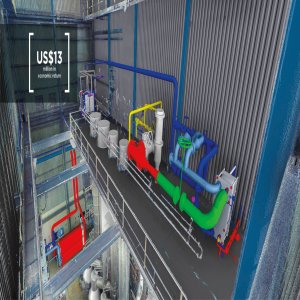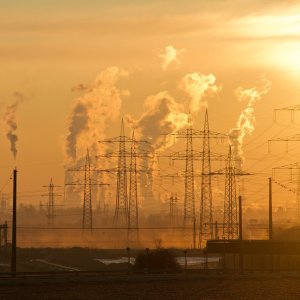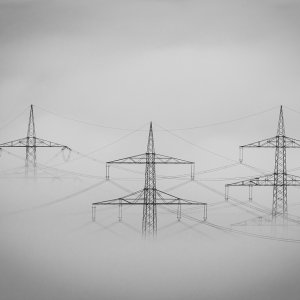Do What Is Best for Mexico

STORY INLINE POST
Q: What lessons has EY taken from the Energy Reform and what is the firm’s most significant contribution to Mexico’s energy transition?
A: Mexico is updating its understanding and approach to building a stronger energy industry based on international best practices. The world is facing significant challenges. In Mexico, these include a political transition that has created uncertainty regarding the country’s vision for a cutting-edge energy industry. EY would like to see Mexico continue its current integration into global trends and consolidate its leadership in renewable energy generation.
Regarding EY’s contribution to the country’s energy transition, we want to become the preferred and holistic service provider for energy companies doing business in Mexico, with the exception of geology or engineering elements that are not our area of expertise. Our goal is to integrate multidisciplinary teams to cover our clients’ needs and provide the best solution possible.
Q: Considering international megatrends such as smart grids, electric vehicles and blockchain, what are the main topics that will shape Mexico’s energy market?
A: The world has experienced two paradigms since the start of electricity consumption. First, the world used a distributed generation model that is basically electricity produced and used in situ. Second, after Nicola Tesla successfully proved his Alternating Current theory, the world experienced a centralized electricity generation that was distributed through transmission lines from one city to another, providing for profitability and large-scale power generation from bigger plants. Today, technology is changing the way electricity is being generated and transmitted and the global trend is to go back to the distributed generation model. The cost, without subsidies, of generating electricity through solar technologies and even having a battery next to the plant to store energy surpluses is becoming increasingly cheaper and sustainable than having plants with an enormous installed capacity. This trend is growing bigger and stronger in Europe and the US and we are assessing the Mexican case. We also believe that transmission and distribution costs will eventually climb higher than those related to distributed generation projects with a battery installed.
But there are other factors to consider such as renewable energy intermittency, smart grids’ integration and reliability and power generation through natural gas. To date, every electricity system still needs a centralized source of power to supply peak demand but this is changing. Mexico needs to thoroughly assess its capacity to cover its energy needs through different sources and determine the best mix. For example, the country has world-class solar irradiation, which reduces the average cost of producing 1MWh compared to other countries, while at the same time it has access to cheap natural gas prices, which is the most reliable and relatively clean source for producing electricity.
Q: What impact do you think the removal of the 15 percent solar panel tariff will have on Mexico’s solar industry?
A: Every market needs to learn from its mistakes and grow as much as possible. Mexico needs to incorporate Tier 1 panels with 25-year guarantees to secure long-term investments and reliable electricity generation through top-of-the-line products. Financing institutions such as private banks will not lend money to project developers if the latter cannot ensure the best products will be used in their projects, which at the same time could disincentivize future investment efforts. For Mexican PV solar panels to be manufactured, companies or interested parties should be aware that these panels should follow best international practices to be able to compete against international products that could eventually flood the Mexican market. I applaud the effort of having quality local content but it will take time for Mexican companies to compete against seasoned international solar panel manufacturers. Applying tariffs to artificially raise the price of international panels so that Mexican panels become competitive is not the best option for Mexico or for any other country.
Q: What progress have you seen in Mexico’s project finance for utility-scale renewable energy projects?
A: Having a contract from Mexico’s long-term electricity auctions is a good thing for every developer. These 15-20-year contracts are not commonly used in other countries and they can create favorable economic and financial conditions for interested investors, whether from private or public equity, commercial banks or development banks owned by governments. Given the low-risk nature of these contracts, developers can offer extremely low prices in their bids while securing the project financing beforehand. During the third long-term electricity auction, Enel Green Power México broke a world record by offering US$17/MWh to produce electricity through wind technologies. Regarding solar technologies, some regions in Mexico come in second place in terms of prices, right after Dubai.
In terms of access to financing, commercial banks are still very cautious when financing utility-scale projects. Given their lack of experience and risk aversion, commercial banks tend to be extremely conservative and only finance small percentages of these types of projects.
To increase the financial leverage of utility-scale projects in Mexico and access funds, project developers tend to use Afores, which is a proven financial practice in other countries, or they access financing through development banks, such as NAFIN or Bancomext.
Development banks tend to have stronger financial leverage than commercial banks, given the former can cushion the financial risk of long-term projects where nobody knows exactly how energy prices will behave in the future, no matter how predictable a company’s economic or mathematical model is. Nobody can predict what will happen in 15 years.
Q: What is the best approach for Mexico to produce its own natural gas rather than importing it from the US?
A: Again, Mexico needs to understand its reality and do what is best for its economy. Today, importing natural gas from the south of the US is cheaper than producing the hydrocarbon in the country. That is a reality and that is how Mexico needs to approach it. If an operator thinks it has the potential to produce natural gas at competitive prices and incentivize the growth of a local market, then it should do it. The Mexican government is aware of this situation and that is why it has a zero-royalty policy to incentivize local natural gas production, but even such an incentive does not secure the development of this market given current conditions.
Producing natural gas locally can certainly bring significant benefits to the country, like being less dependent on other countries and becoming self-sustainable in terms of energy consumption, which translates into national security. Unfortunately, the current conditions and Mexico’s short-term vision to supply its natural gas demand as quickly and cheaply as possible are not making this market attractive enough, which is a shame given Mexico’s potential to find and produce natural gas.
Q: How can Mexico supply its increasing electricity consumption with cleaner and renewable energy sources given current market conditions?
A: As the question states, it depends on the market’s conditions. We do not see carbon-based projects worldwide because they are not economically sustainable anymore. It is not a matter of suddenly becoming greener but rather a matter of economics. Natural gas and renewable projects are becoming increasingly cost-efficient and this trend will continue as each market matures where it is performed. This is why we do not see nuclear plants being built worldwide. Nuclear plants in the UK, for instance, showcase prices well over £80/MWh, between US$110-115/MWh. That is extremely expensive and does not include the cost of transporting the electricity to where it is needed, which increases the total price of the commodity.
In Mexico, we will start seeing more independent power generation projects come online given the fact that the market is no longer controlled by CFE or the government. If a company wants to produce electricity for basic supply or residential usage through CENACE bids, it can do so without the government or CFE’s approval.























